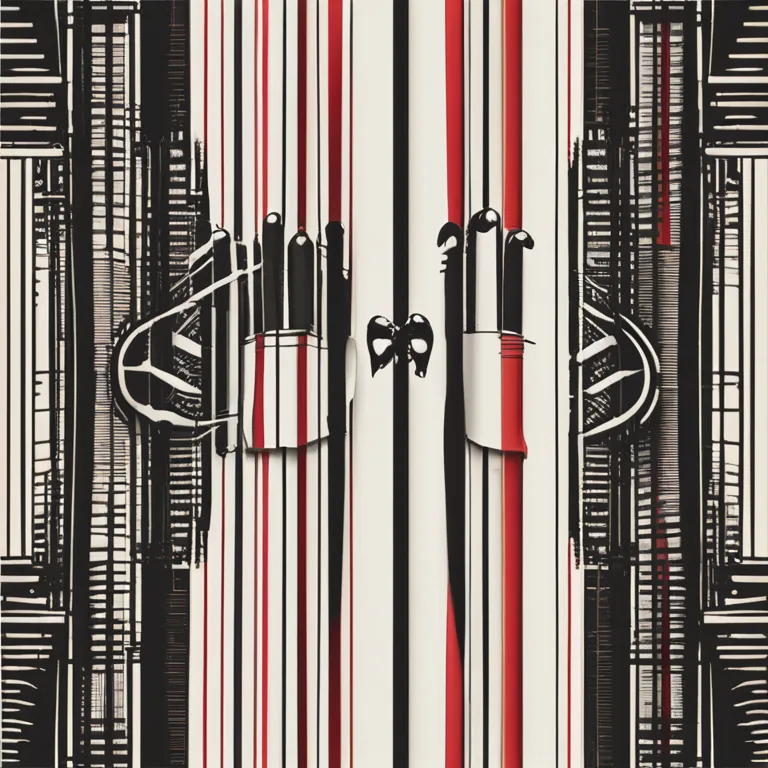
The Mystique of Left & Right: Palmistry Hand Differences
Discover the meaningful distinctions in palmistry between the left and right hands, and what these differences reveal about your path and personality.
article by Nora Pennington
Introduction to Hand Dichotomy in Palmistry
In the enigmatic world of palmistry, the hands are viewed as conduits to personal insight. Traditional palmistry posits that each hand offers unique revelations: the left is seen as the canvas of inherited traits and potential, while the right hand represents what we've accomplished with those traits. As we embark on an exploration of palmistry differences between hands, it's essential to consider the historical context, prevailing theories, and evolving interpretations that have brought us to our current understanding of this ancient practice.

Dominant Hand Dynamics
The dominant hand, generally the one we write with, is traditionally associated with conscious thought and outward personality in palmistry. It reflects our life experiences and the changes we go through. A palmar feature that has altered over time may offer a narrative of personal development or adaptation. For example, a new line suggests a new journey or change in lifestyle. On the contrary, fixed features could denote steady traits or life-long principles. The interaction amongst the lines, mounts, and other palm features in this hand helps articulate a story of choice and external influence.

The Non-Dominant Hand's Tale
Alternatively, the non-dominant hand is thought to bear the markers of our latent predispositions and potentials. Call it a 'prequel' to our life story; it carries the imprints of inherited qualities and unconscious elements. Certain schools of palmistry consider it a gauge of the untapped possibilities or the traits we might have inherited from our lineage. The undeviating nature of the non-dominant hand features could serve as indicators of the underlying frameworks within which our lives unfold, potentially predicting predisposed challenges or gifts.

Interpreting Line Variances
The lines on our hands are the most prominent features observed by palmists. Variations between the hands in the heart, head, and life lines are viewed with great interest. A heart line that starts under different fingers on each hand might indicate a shift in relational approach or emotional intelligence. A head line that changes in length could symbolize an evolution of intellectual mindset or decision-making style. Meanwhile, the life line's divergence between hands might reflect health transformations or life-changing events. These juxtapositions shed light on our journey from innate predilections to personalized experiences.

Subtext in Mounts and Shapes
Beyond lines, palmistry also examines mounts, which are fleshy zones beneath each finger, and the overall hand shape. Variances in this context between hands may point to a dissonance between our potential and our actions or external pressures altering personal development. A fuller mount on the dominant hand may reflect an amplified characteristic or a trait one has worked to strengthen. Contrasts in hand shapes, such as one hand being more square (practical) and the other more conical (creative), could signal a conflict or balance that has shaped one's narrative.
Modern Palmistry Perspectives
As palmistry moves through the ages, the interpretations adapt and change. In the 21st century, there's a growing appreciation for the fluidity of hand features influenced by neurological changes and life habits. The once fixed interpretations are now seen through the lens of personal growth and adaptability. This contemporary view embraces the notion that our hands are maps that change as we navigate through life, redefining the relationship between the ‘static’ non-dominant hand and the ‘dynamic’ dominant hand in fascinating ways.
Conclusion: Embracing Hand Harmony
The intricate dance between our left and right hands in palmistry illuminates the synchronicity between our innate dispositions and the stories we choose to create. Just as life refuses to be confined to a singular narrative, our hands represent the multiplicity of paths and potentials available to us. Both hands, when read together, chart a compelling voyage from who we were born to be to who we strive to become. This ever-evolving landscape of ridges and lines invites us to understand the deeper facets of our being and the transformative power of our choices.
Published: 1/3/2024
Modified: 1/3/2024
More predictions
Come back here soon to learn more about yourself and your future


The Secrets of Palmistry Travel Lines
Discover the meanings behind the travel lines on your palms and how they may hint at your journey through life.


Palmistry Clues to Predicting Parenthood
Delve into the palmistry lines associated with predicting childbirth and learn what your hands may reveal about future family life.


The Origins of Palmistry: An Ancient Practice
Delve into the fascinating beginnings of palmistry—the ancient art of hand reading for insights into character and destiny.